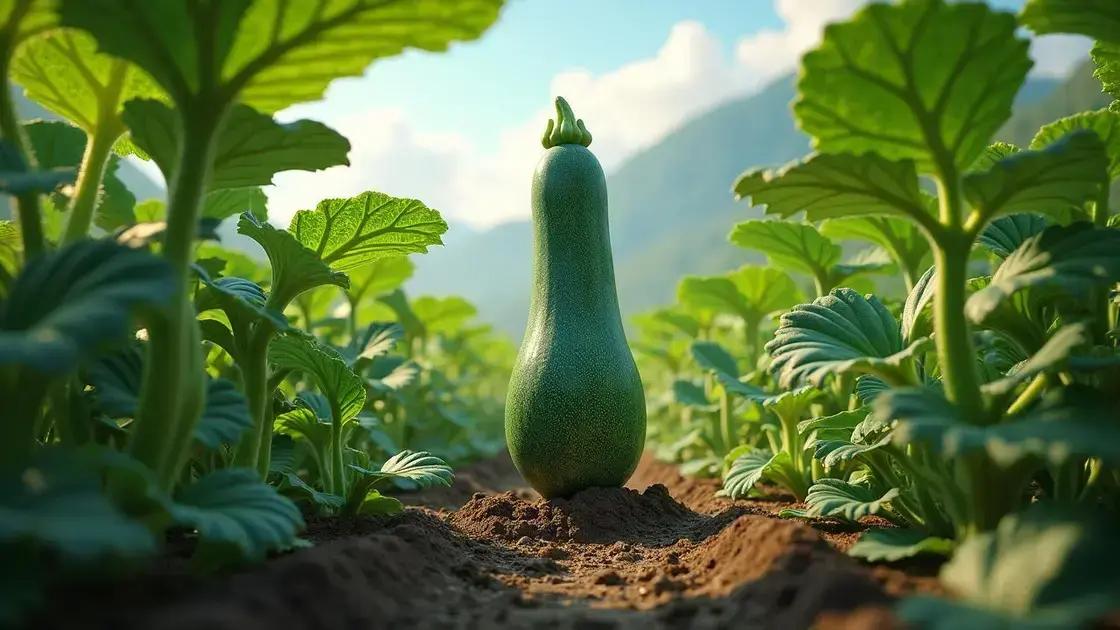How to Take Care of a Zucchini Plant: 7 Vital Tips for Success
How to take care of a zucchini plant is a question many gardening enthusiasts ask. Unlike other vegetables, zucchini is unique in its needs, requiring special attention to thrive. Explore essential factors like soil quality, watering techniques, and pest management to ensure your zucchini plants flourish, giving you a bountiful harvest.
Table of Contents
ToggleUnderstanding soil requirements for zucchini plants
Understanding soil requirements for zucchini plants is crucial for ensuring healthy growth and bountiful yields. Zucchini thrives in nutrient-rich, well-draining soil that allows roots to spread freely. Here are the essential factors to consider for optimal soil conditions:
Soil composition
- Loamy soil: The ideal soil for zucchini is loamy, which is a mix of sand, silt, and clay, providing good drainage and ample nutrients.
- pH levels: Zucchini prefers slightly acidic to neutral soil, with a pH level between 6.0 and 7.0. You can test your soil with a simple pH testing kit.
Preparing the soil
- Start with soil testing to determine nutrient levels and pH.
- Add organic matter, such as compost or well-rotted manure, to enhance soil fertility.
- Ensure proper drainage by incorporating sand or perlite if your soil is heavy clay.
Maintaining soil health
To keep your soil healthy throughout the growing season, consider these practices:
- Crop rotation: Rotate your crops each season to prevent soil depletion and control pests.
- Mulching: Apply organic mulch to retain moisture, suppress weeds, and maintain consistent soil temperatures.
- Regular amendments: Periodically add fertilizer based on the results of your soil test to provide necessary nutrients.
For those interested in enhancing their gardening knowledge further, consider exploring indoor gardening techniques that can complement your zucchini planting efforts.
Troubleshooting soil issues
| Issue | Solution |
|---|---|
| Compacted soil | Add organic matter and aerate the soil to improve drainage. |
| Excessive acidity | Incorporate lime into the soil to raise pH levels. |
| Insufficient nutrients | Utilize balanced fertilizers with nitrogen, phosphorus, and potassium. |
Tips for an effective watering schedule

Tips for an effective watering schedule are essential for growing healthy zucchini plants. Proper watering practices can significantly impact your zucchini’s growth and productivity. Here’s how to establish an effective watering routine:
Understanding watering needs
- Zucchini plants thrive on consistent moisture, particularly in warm months, requiring about 1-2 inches of water per week.
- Watering deeply encourages root growth, which is crucial for nutrient uptake and overall plant health.
Creating a watering schedule
- Monitor soil moisture: Check soil moisture by inserting your finger an inch deep. If it feels dry, it’s time to water.
- Water early or late: Water your zucchini in the early morning or late afternoon to minimize evaporation and fungal diseases.
- Use a drip system: Consider using a drip irrigation system to deliver water directly to the soil, reducing water waste.
Signs of improper watering
Recognizing the signs of overwatering or underwatering can help you adjust your schedule accordingly:
- Overwatering signs: Yellowing leaves and wilting may indicate excess moisture.
- Underwatering signs: Wilting and browning edges on leaves suggest that your zucchini is thirsty.
For additional gardening tips and insights, consider exploring indoor gardening techniques to complement outdoor practices.
Watering checklist
| Day | Action |
|---|---|
| Monday | Check soil moisture; water if dry. |
| Wednesday | Inspect leaves for signs of overwatering. |
| Friday | Water deeply if soil is dry. |
Signs of pests and how to manage them effectively
Signs of pests and how to manage them effectively is crucial for maintaining healthy zucchini plants. Pests can cause significant damage if not identified and controlled promptly. Here are key indicators to watch for and management strategies to implement:
Common pest indicators
- Leaf damage: Holes or chew marks on leaves can indicate the presence of pests like caterpillars.
- Webbing: Fine webs on the underside of leaves may suggest spider mites.
- Sticky residue: Honeydew on leaves can signal aphid infestations.
Identifying specific pests
Understanding the types of pests that commonly affect zucchini plants can help in management:
- Squash bugs: These pests create yellow spots on leaves and often congregate at the base of the plant.
- Powdery mildew: Although a fungus, this condition can attract pests and is characterized by white spots on leaves.
- Cucumber beetles: Small, striped beetles that feed on both leaves and flowers, they can spread disease.
Effective pest management techniques
Here are strategies to manage pests effectively in your zucchini garden:
- Regular inspections: Frequently check plants for signs of pests, focusing on the undersides of leaves.
- Physical barriers: Use row covers to protect young plants from infestations.
- Natural predators: Encourage beneficial insects like ladybugs and lacewings that feed on harmful pests.
- Organic insecticides: Utilize neem oil or insecticidal soap as a natural method to control pests without harming beneficial insects.
Don’t forget to keep learning about gardening. For further tips, consider exploring indoor gardening techniques.
Tracking pest control methods
| Pest | Signs | Management |
|---|---|---|
| Squash bugs | Yellow spots on leaves | Handpick and destroy eggs; use insecticidal soap. |
| Cucumber beetles | Chew marks and wilting | Row covers and diatomaceous earth for prevention. |
| Aphids | Sticky residue and curled leaves | Blast with water or apply insecticidal soap. |
In conclusion
Caring for zucchini plants requires attentive practices, from understanding soil requirements and watering schedules to managing pests effectively. By implementing these tips, you will foster a healthy and productive garden. Remember to monitor your plants regularly and adjust your care as needed to ensure their success. For more guidance, check out tips on enhancing your indoor garden.

